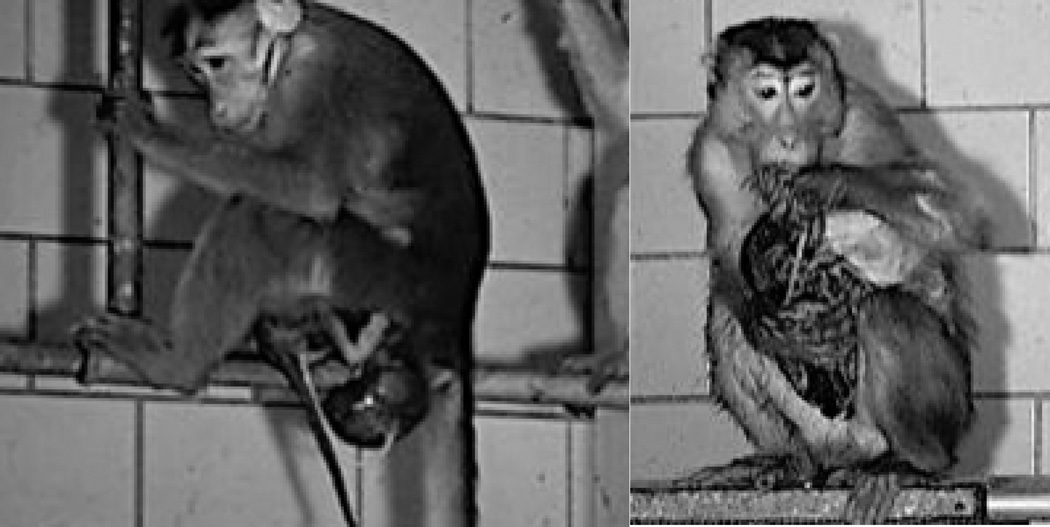Figure 4.
The placenta fulfills several additional functions after it passes soon after delivery in nonhuman primates (A). It is a source of energy and hormones for the parturient female. In addition, as female monkeys engage in placentophagia they raise the placenta above the infant and compress it, providing a substantial blood transfusion to the neonate (B). When those red blood cells die, iron is scavenged by the infant’s macrophages and recycled. In our research, we track placental delivery by administering stable iron isotopes to the gravid female and quantifying the iron incorporated into the infant’s red blood cells for months after birth.

